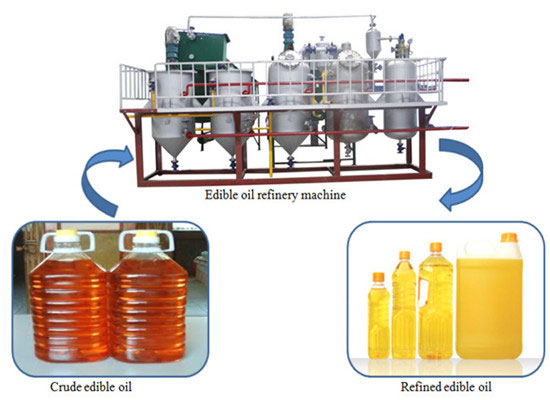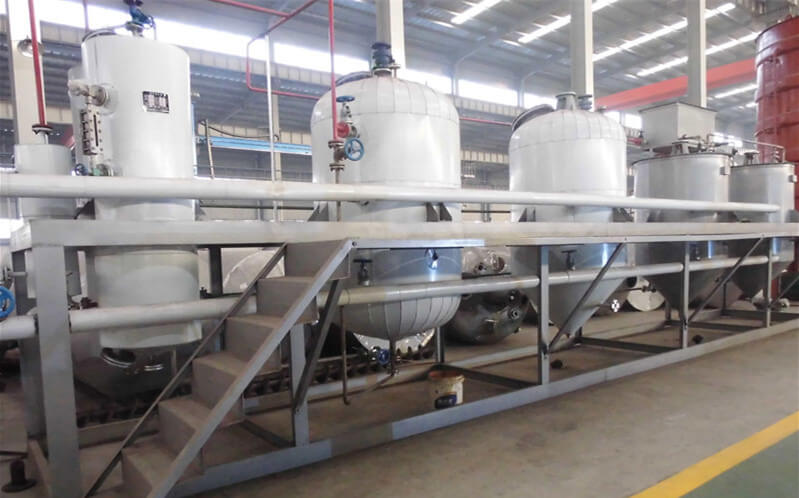Edible Oil Refining Plant
Edible Oil Refinery Plants and Edible Oil Refining are of vital consideration when it comes to Edible Oil Technology. We manufacture and export cost effective Oil Refinery Plants along with customized solutions for Cooking Oil Refinery. An entrepreneur can achieve good success in edible oil business if he has a perfect guidance from the supplier. We have done successful installations throughout the world which has proven financial benefits to edible oil refiners and the edible oil business in general.Edible oil is indispensable in our daily life, no matter what kind of food you make. Especially in China, we have accumulated thousands of years diet culture, and edible oil quality will directly influence the food flavor. Thus high-quality edible oil is definitely important. It is said that the edible oil without refinery is full of impurities such as gums, pigments, waxes, phosphatides and free fatty acid (FFA), among which some are harmful to our health. Edible oil refining is essential to remove them and offer us the first or second-grade edible oil.

Edible Oil Refinery Equipment
Refining pot, decolorizing pot, deodorizing pot, vacuum pump, steam generator and heat conduction furnace are necessary for the edible oil refining process. They are connected with vessels by pipeline.

Edible Oil Refinery Process

Actually, the edible oil refinery is classified as physical refining and chemical refining, and we will introduce the chemical refining method.
The complete edible oil refining process is composed of the following sections which are Degumming, Neutralising, Bleaching, Deodorization, and Dewaxing.
1. Degumming
This is also the pretreatment of the oil refinery. Degumming is to remove the phosphatides and mucilaginous material in crude oil. Phosphatides had strong hygroscopy and its existence is not good for edible oil storage, but it has high nutrition and wide application. The removal of phosphatides is the essential part of oil refining. This step adopts hot water or alkali electrolyte solution. The phosphatides puff by absorbing water, then precipitate and separate out from the oil.
2. Neutralization
The second step is neutralization. It is to remove the Free Fatty Acids(FFA) by adding caustic soda. Thermic fluid oil is needed here to heat crude oil to about 60¡ãC. Then stir the crude oil, and the chemical reaction can create soap stock, which settles at the bottom of the tank and take out.
3. Bleaching
Neutralized oil now enters into the next vessel where the unpleasant color is needed to remove. During this step, we use bleaching earth which has strong adsorbability in high temperature. The thermic fluid oil temperature should be up to 110℃ which ensures good adsorbability, and stir is necessary too. The adsorbed residue and bleaching earth are filtered through the filter process.
4. Deodorization
The clean bleached oil is then drawn to deodorizer to the last step-deodorization, to remove the volatile odoriferous material and free fatty acids. This step operates under high vacuum. The oil is heated up to 110℃ and then live steam is piped, the oil temperature continuously rises to 200-220 ℃. The smell is removed and the deodorized oil fluids in cooler to cool by circulating oil. Again, it should undergo the second time filtering and then refined edible oil is obtained.
Oil Refining Machines Advantages
1. Equip with the heating system and electrical control box.
2. High automatic operation and reliable performance.
3. Flexibly refining place; both indoor and outdoor available.
4. The main part of the machine is made of stainless steel and alloy steel.
How To Choose Qualified Edible Oil?
1. Color. Generally speaking, the higher refining standard, the lighter the color. Of course, every vegetable oil has its own color.
2. The clarity degree.The more clear the oil, the higher quality it has.
3. The odorlessness. Put one or two drops in your hands and rub your hands together for a while. Choose it if there is no smell or pungent taste.